This is a preprint.
p300 KAT regulates SOX10 stability and function in human melanoma
- PMID: 38469149
- PMCID: PMC10926666
- DOI: 10.1101/2024.02.20.581224
p300 KAT regulates SOX10 stability and function in human melanoma
Update in
-
p300 KAT Regulates SOX10 Stability and Function in Human Melanoma.Cancer Res Commun. 2024 Aug 1;4(8):1894-1907. doi: 10.1158/2767-9764.CRC-24-0124. Cancer Res Commun. 2024. PMID: 38994683 Free PMC article.
Abstract
SOX10 is a lineage-specific transcription factor critical for melanoma tumor growth, while SOX10 loss-of-function drives the emergence of therapy-resistant, invasive melanoma phenotypes. A major challenge has been developing therapeutic strategies targeting SOX10's role in melanoma proliferation, while preventing a concomitant increase in tumor cell invasion. Here, we report that the lysine acetyltransferase (KAT) EP300 and SOX10 gene loci on Chromosome 22 are frequently co-amplified in melanomas, including UV-associated and acral tumors. We further show that p300 KAT activity mediates SOX10 protein stability and that the p300 inhibitor, A-485, downregulates SOX10 protein levels in melanoma cells via proteasome-mediated degradation. Additionally, A-485 potently inhibits proliferation of SOX10+ melanoma cells while decreasing invasion in AXLhigh/MITFlow melanoma cells through downregulation of metastasis-related genes. We conclude that the SOX10/p300 axis is critical to melanoma growth and invasion, and that inhibition of p300 KAT activity through A-485 may be a worthwhile therapeutic approach for SOX10-reliant tumors.
Keywords: A-485; SOX10; epigenetic; gene; melanoma; p300.
Conflict of interest statement
Conflict of Interest Statement P.A.C. is a co-founder of Acylin Therapeutics and a consultant for Abbvie regarding p300 acetyltransferase inhibitors. He also is a co-inventor on U.S. patent 11,565,994 B2 that concerns LSD1 and CoREST complex inhibitors. R.M.A. is a co-founder of Acylin Therapeutics.
Figures
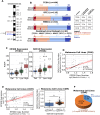

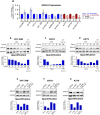
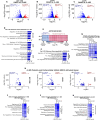
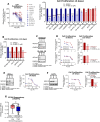
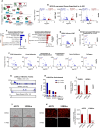
Similar articles
-
p300 KAT Regulates SOX10 Stability and Function in Human Melanoma.Cancer Res Commun. 2024 Aug 1;4(8):1894-1907. doi: 10.1158/2767-9764.CRC-24-0124. Cancer Res Commun. 2024. PMID: 38994683 Free PMC article.
-
Targeting Lineage-specific MITF Pathway in Human Melanoma Cell Lines by A-485, the Selective Small-molecule Inhibitor of p300/CBP.Mol Cancer Ther. 2018 Dec;17(12):2543-2550. doi: 10.1158/1535-7163.MCT-18-0511. Epub 2018 Sep 28. Mol Cancer Ther. 2018. PMID: 30266801
-
MITF Expression Predicts Therapeutic Vulnerability to p300 Inhibition in Human Melanoma.Cancer Res. 2019 May 15;79(10):2649-2661. doi: 10.1158/0008-5472.CAN-18-2331. Epub 2019 Mar 25. Cancer Res. 2019. PMID: 30910803 Free PMC article.
-
Clinical Significance of SOX10 Expression in Human Pathology.Curr Issues Mol Biol. 2023 Dec 15;45(12):10131-10158. doi: 10.3390/cimb45120633. Curr Issues Mol Biol. 2023. PMID: 38132479 Free PMC article. Review.
-
Microphthalmia-associated transcription factor expression levels in melanoma cells contribute to cell invasion and proliferation.Exp Dermatol. 2015 Jul;24(7):481-4. doi: 10.1111/exd.12724. Exp Dermatol. 2015. PMID: 25866058 Review.
References
-
- Tsoi J., Robert L., Paraiso K., Galvan C., Sheu K.M., Lay J., Wong D.J.L., Atefi M., Shirazi R., Wang X., et al. (2018). Multi-stage Differentiation Defines Melanoma Subtypes with Differential Vulnerability to Drug-Induced Iron-Dependent Oxidative Stress. Cancer Cell 33, 890–904 e895. 10.1016/j.ccell.2018.03.017. - DOI - PMC - PubMed
Publication types
Grants and funding
LinkOut - more resources
Full Text Sources
Research Materials
Miscellaneous
